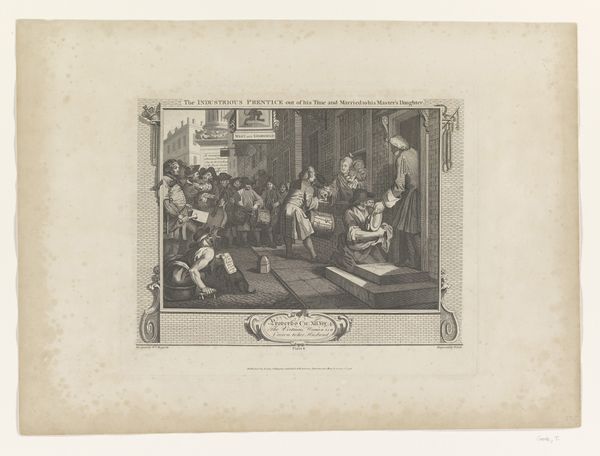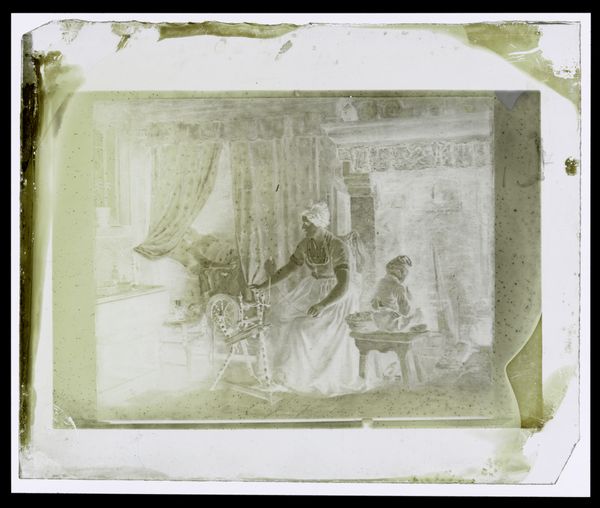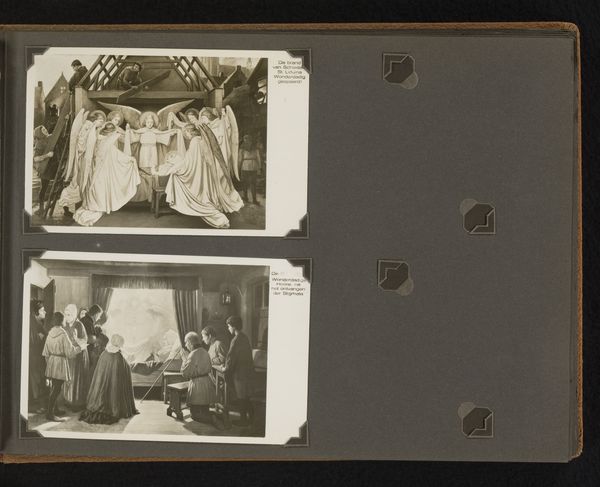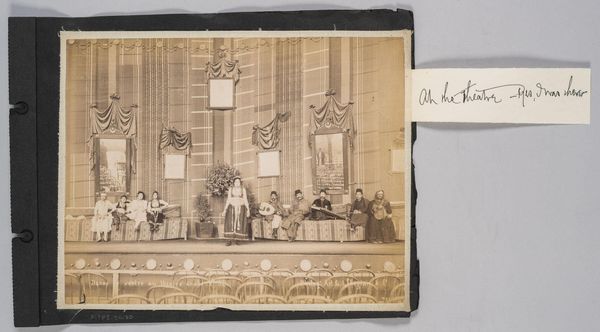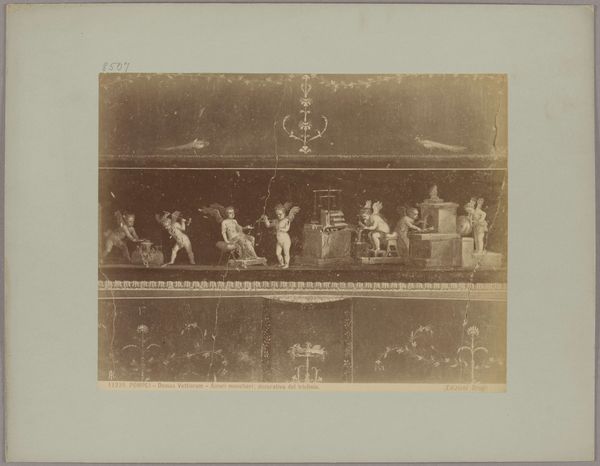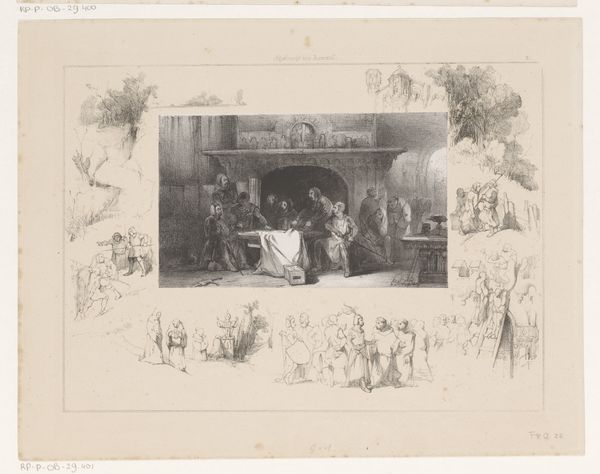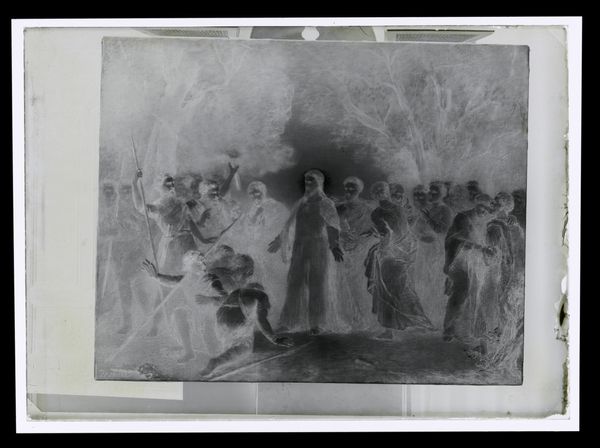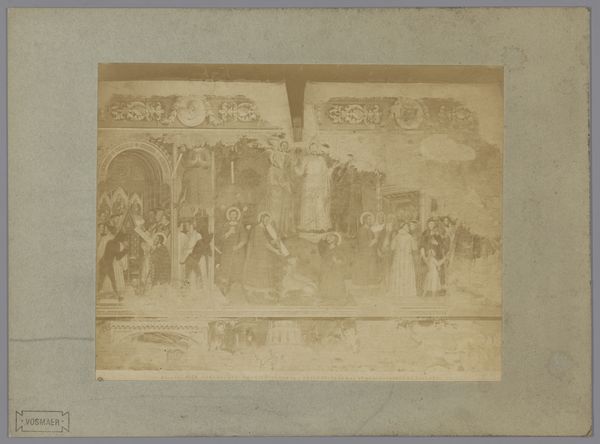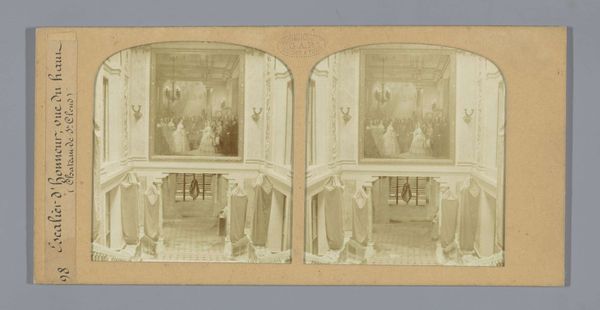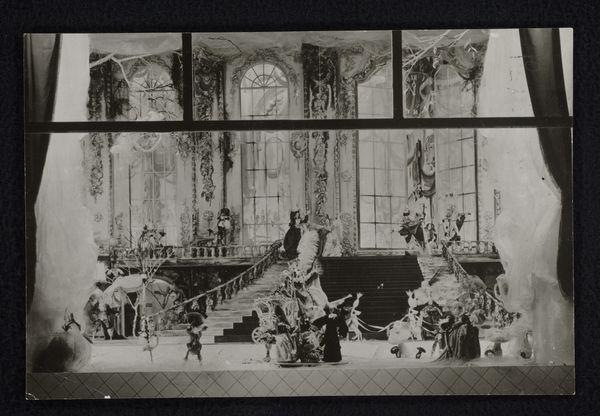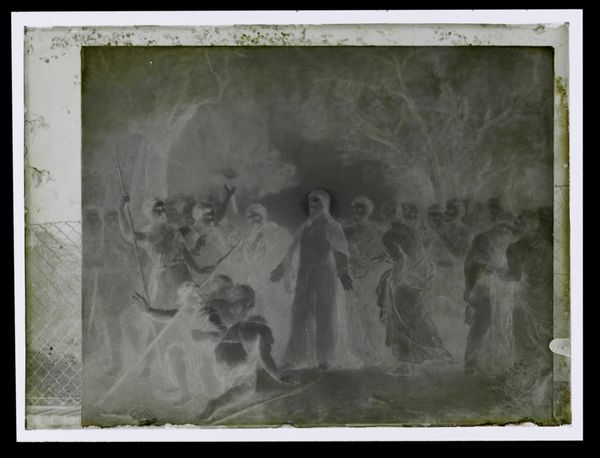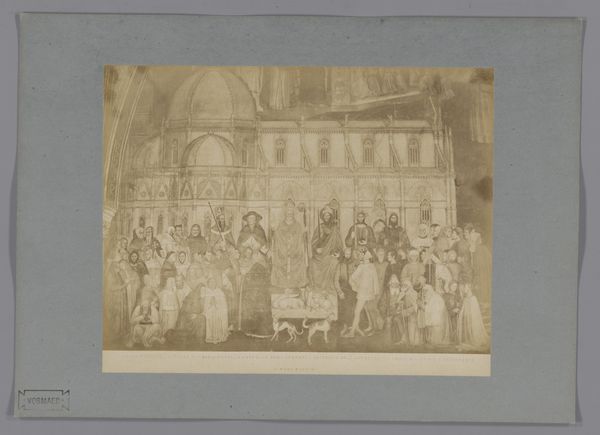
Fotoreproductie van een voorstudie voor de schilderijen 'Belsazar's gastmaal' en de 'Bruiloft te Kana' c. 1871 - 1900
0:00
0:00
#
repetition of black
#
sculpture
#
brutalist
#
unrealistic statue
#
carved into stone
#
dark colour palette
#
home decor
#
repetition of black colour
#
carved
#
statue
Dimensions: height 118 mm, width 165 mm
Copyright: Rijks Museum: Open Domain
Curator: This intriguing photo reproduction gives us a peek into Laurens Lodewijk Kleijn’s preliminary studies for his paintings "Belsazar's Feast" and "The Wedding at Cana," dating circa 1871-1900. Quite a find, isn’t it? Editor: It's… ghostly. Like looking at a banquet from behind a veil. All those figures rendered in high contrast—it’s almost unsettling. The rigid geometry in the columns combined with all the feasting people... it's quite the contrast. Curator: The stark presentation definitely plays up the drama, doesn't it? The studies, and their eventual larger paintings, are rooted in distinct biblical narratives with strong ties to moral teachings. Editor: Yes, it almost feels performative in the image with all the figures lined up at the table. Knowing the subject material makes the performance or display of religion more obvious, even if these images were merely preparatory in their creation. It emphasizes a communal practice, the social performance of religious devotion or spectacle, but drained of its vibrancy by the reproduction's pallor. Curator: Precisely! In “Belshazzar’s Feast,” the story is all about divine retribution on a blasphemous king. And "The Wedding at Cana," is an affirming story highlighting a display of faith. Both of them are incredibly public. Consider how Kleijn utilizes and presents his studies within the broader cultural and religious context of his time. These biblical scenes were quite popular. They reinforced dominant religious norms but also, through their public display, they brought conversations about faith to the forefront. Editor: The consistent display across society is interesting when thinking of the wedding image since in many cultures the wedding symbolism refers to spiritual transformation and community bonding. Here, under this rendering and framing, it appears stiff, perhaps signifying changing attitudes towards the structure of social bonding through traditional religion at the time? The light definitely throws those themes into harsh relief. Curator: The photograph allows us a rare glimpse behind the scenes, revealing Kleijn's process as an artist responding to both religious fervor and the art market. What a testament to art's role in society. Editor: Absolutely. And for me, the dark aesthetic is striking; its haunting feel making familiar biblical events appear freshly ominous and thought-provoking. Curator: Yes. We might leave here pondering not only these particular depictions of those prominent, society-influencing stories but also reflect on art’s continuing power to spark conversation. Editor: Indeed, offering us visual frameworks for engaging with our shared cultural inheritance and making it all appear somewhat unfamiliar in its reproduction.
Comments
No comments
Be the first to comment and join the conversation on the ultimate creative platform.
